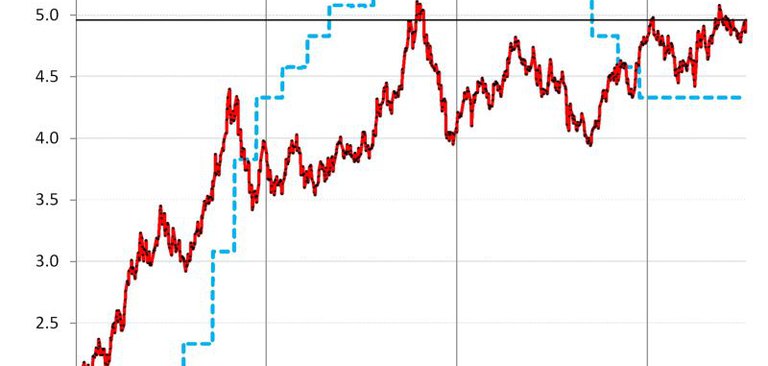
Bond Market Anxiety: A Deeper Dive

The bond market is sounding an alarm, and the details are crucial to understanding the potential economic turbulence ahead. Let's dig deeper into the numbers causing this anxiety.
The headline news is the 30-year Treasury yield jumping to 4.96% 📈, but the story is why it's happening, especially when the Federal Reserve has been cutting rates.
The Great Disconnect: Fed Cuts vs. Market Reality 🤯
Here's the central paradox:
〰️ Fed Action: Since September 2024, the Fed has cut its policy rates by 100 basis points (1.00%) to stimulate the economy.
〰️ Market Reaction: In that same timeframe, the 30-year Treasury yield has actually risen by 102 basis points.
This is the opposite of what's expected. It suggests the market is ignoring the Fed's short-term moves and is instead terrified of three things down the road:
Persistent Inflation 🔥: The belief that inflation will remain a long-term problem.
〰️A Worrisome Fed 🤔: Concern that the Fed will be too slow or "lackadaisical" in fighting future inflation.
〰️Massive Debt Supply 🌊: The U.S. government is issuing a "Mississippi River" of new debt that the market must absorb, requiring higher yields to attract buyers.
〰️Dissecting the Yield Curve: A Tale of Two Ends ↔️
The yield curve isn't moving in one piece. It's being pulled in two different directions:
⏳The Short End (1 to 6 months): These yields are pinned down around the Fed's policy rate of 4.33%. They haven't budged much because they reflect the Fed's current actions. The 6-month yield, a key indicator of near-term rate cut expectations, is not yet signaling a cut within the next 2-3 months.
⏳⏳The Long End (10 to 30 years): This is where the anxiety lives. The 10-year yield has climbed to 4.5%, and the 30-year is nearing 5%. These rates are driven by future expectations. The result is a "steepening" curve, where long-term yields are significantly higher than short-term ones—a classic signal of economic uncertainty.
The Current Spread: This gap is now a historically wide 2.34 percentage points. To put that in perspective, a spread this wide has only occurred four times in the last 40 years, typically during financial panics or major economic shifts.
The Reason: The Fed has stopped its Quantitative Easing (QE) program, where it bought trillions in Mortgage-Backed Securities (MBS), artificially pushing mortgage rates down. Now, it's doing the opposite: Quantitative Tightening (QT). The Fed has already shed over $600 billion in MBS and plans to get rid of them entirely. With the largest buyer gone, the market demands a higher premium (a wider spread) for mortgage debt.
Conclusion: The bond market is signaling that the Fed's tools aren't having the desired effect on the long-term outlook.
